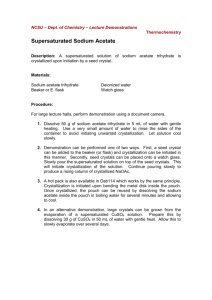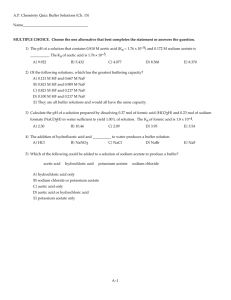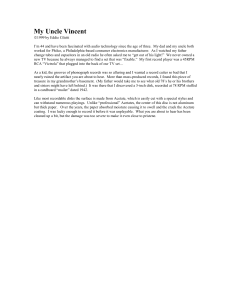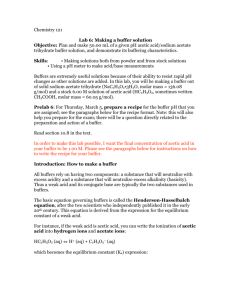How to make a buffer
advertisement
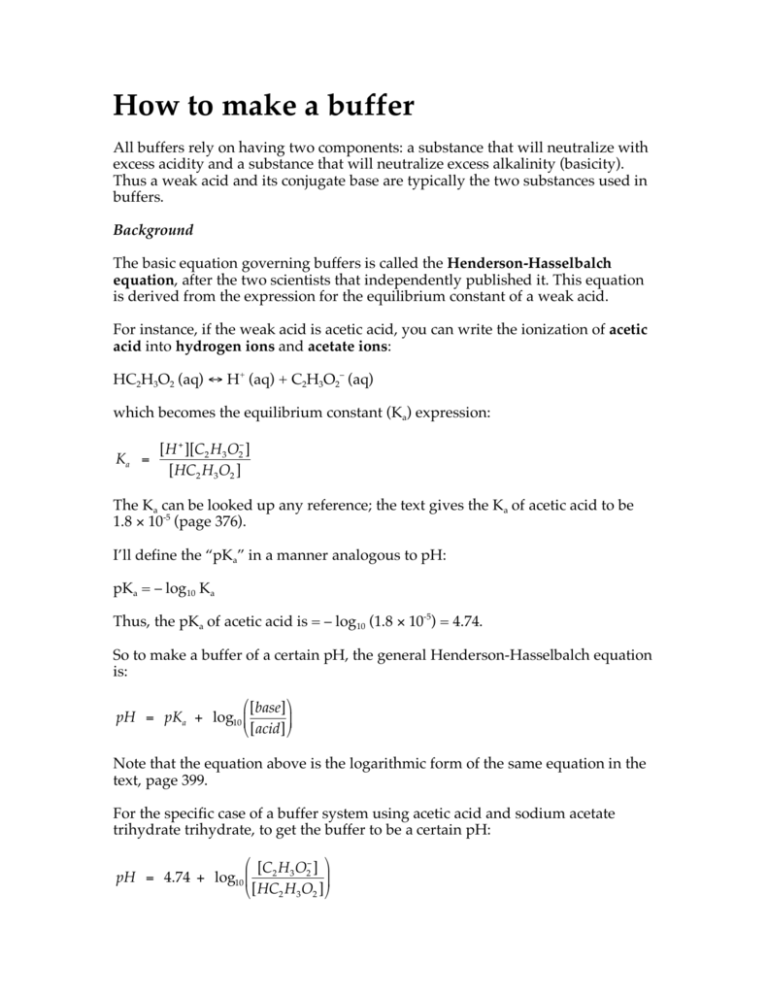
How to make a buffer All buffers rely on having two components: a substance that will neutralize with excess acidity and a substance that will neutralize excess alkalinity (basicity). Thus a weak acid and its conjugate base are typically the two substances used in buffers. Background The basic equation governing buffers is called the Henderson-Hasselbalch equation, after the two scientists that independently published it. This equation is derived from the expression for the equilibrium constant of a weak acid. For instance, if the weak acid is acetic acid, you can write the ionization of acetic acid into hydrogen ions and acetate ions: HC2H3O2 (aq) ↔ H+ (aq) + C2H3O2– (aq) which becomes the equilibrium constant (Ka) expression: Ka = ! [H + ][C2 H3 O2" ] [HC2 H3 O2 ] The Ka can be looked up any reference; the text gives the Ka of acetic acid to be 1.8 × 10-5 (page 376). I’ll define the “pKa” in a manner analogous to pH: pKa = – log10 Ka Thus, the pKa of acetic acid is = – log10 (1.8 × 10-5) = 4.74. So to make a buffer of a certain pH, the general Henderson-Hasselbalch equation is: " [base] % pH = pKa + log10 $ ' # [acid] & Note that the equation above is the logarithmic form of the same equation in the text, page 399. ! For the specific case of a buffer system using acetic acid and sodium acetate trihydrate trihydrate, to get the buffer to be a certain pH: # [C H O" ] & pH = 4.74 + log10 % 2 3 2 ( $ [HC2 H3 O2 ] ' ! Thus, in order to write your recipe, you need to know what the concentration of acid [HC2H3O2] is (in the lab writeup, I tell you that this concentration must be 1.00 M), and what the concentration of the base [C2H3O2–] is (notice you can solve for this concentration in the equation above, since this is the only unknown). Before doing anything further, solve the equation on the previous page. Figuring out how much sodium acetate trihydrate you will need Once you know what [C2H3O2–] you need, you should calculate how many grams of NaC2H3O2•3H2O (sodium acetate trihydrate) you will need to get that concentration. Recall that sodium acetate trihydrate ionizes in this fashion: NaC2H3O2•3H2O (s) → K+ (aq) + C2H3O2– (aq) + 3 H2O (l) So that one mole of sodium acetate trihydrate yields one mole of acetate ions. Since you are making 50.00 mL ( = 0.05000 L) of solution, first calculate the number of moles of acetate ions you will need, using the [C2H3O2–] you need: (number of moles of acetate ions needed) = [C2H3O2–] (0.05000 L) Then, since the number of moles of sodium acetate trihydrate you will need is going to be the same as the number of moles of acetate ion you will need: (# of moles of sodium acetate trihydrate needed) = (# of moles of acetate ions needed) Use the molar mass of sodium acetate trihydrate (136.08 g/mol) to calculate the number of grams of sodium acetate trihydrate you need. Figuring out how much acetic acid you will need Since the [HC2H3O2] = 1.00 M and since you’re starting off with stock 6.00 M acetic acid solution, use the dilution formula (section 10.10) to determine the number of milliliters of the stock solution you will need: (conc. of stock acid) (volume of stock acid) = (conc. of dilute acid) (volume of dilute acid) where you are solving for the volume of the stock acid solution (you know all the other numbers). The recipe You now have all the numbers you need to fill in the recipe given on the lab.



